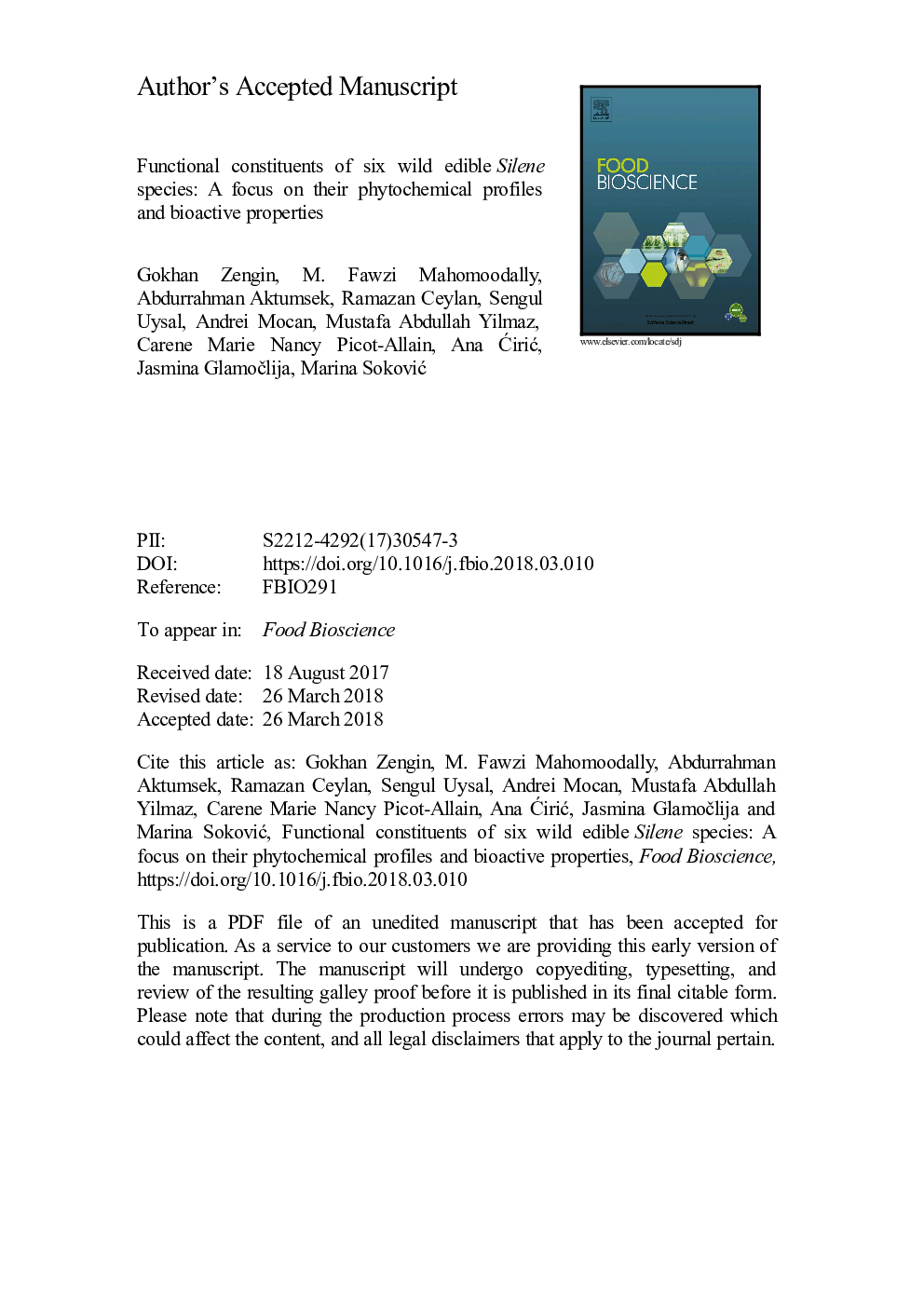| Article ID | Journal | Published Year | Pages | File Type |
|---|---|---|---|---|
| 6488828 | Food Bioscience | 2018 | 30 Pages |
Abstract
Six wild species (S. alba, S. conoidea, S. dichotoma, S. italica, S. supina, and S. vulgaris) from the Silene genera were tested for potential anti-enzymatic (acetyl cholinesterase (AChE), butyryl cholinesterase (BChE), tyrosinase, α-amylase, and α-glucosidase), antimicrobial (16 microbial strains), and antioxidant activity. An ultra-high performance liquid chromatography-electrospray ionization-tandem mass spectrometry method was used for phytochemical determination. Quinic acid, malic acid, protocatechuic acid, p-coumaric acid, and hesperidin were common in the six Silene species. All extracts showed higher antibacterial effects compared to streptomycin and ampicillin (except S. dichotoma). Antifungal agents, bifonazole (MIC 0.10-0.20â¯mg/mL and MFC 0.20-0.30â¯mg/mL) and ketoconazole (MIC 0.15-2.30â¯mg/mL and MFC 0.20-3.50â¯mg/mL) showed lower activity than the investigated Silene species extracts. S. alba inhibited AChE (2.00â¯mg GALAE/g extract) and BChE (1.0â¯mg GALAE/g extract). The results showed metal chelating potential ranging from 12 to 19â¯mg EDTAE/g extract, with S. conoidea being the most active, and S. supina the least. S. dichotoma showed the highest reducing potential against both cupric (154â¯mg TE/g extract for CUPRAC) and ferric (102â¯mg TE/g extract for FRAP) ions. Overall, Silene species could be considered as emerging interesting functional foods and sources of nutraceuticals with applications in the management of different diseases.
Related Topics
Physical Sciences and Engineering
Chemical Engineering
Bioengineering
Authors
Gokhan Zengin, M. Fawzi Mahomoodally, Abdurrahman Aktumsek, Ramazan Ceylan, Sengul Uysal, Andrei Mocan, Mustafa Abdullah Yilmaz, Carene Marie Nancy Picot-Allain, Ana ÄiriÄ, Jasmina GlamoÄlija, Marina SokoviÄ,
